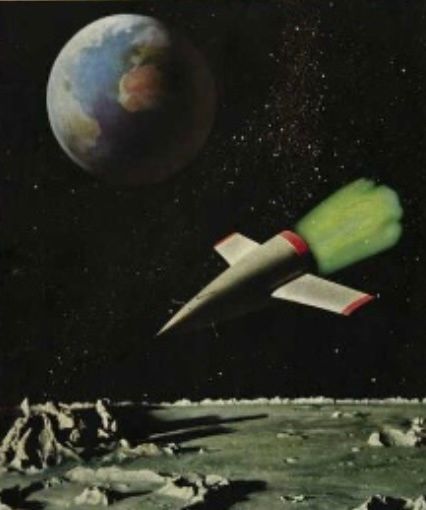12.11.2024

Turn back the page to the Atomic Age. It’s 1958. The United States and the Soviet Union have been busy testing nuclear weapons on Earth, but the launch of the Soviet satellite Sputnik 1 in 1957 has changed the entire Cold War. The Soviets proved they can launch a rocket, and therefore could launch a nuclear warhead, anywhere in the world. The United States, inside both its military and its scientific community, was scrambling for a response.
One plan? Nuke the Moon. Yes, the United States briefly considered blowing up part of the Moon. This was an idea the Air Force seriously entertained and in fact studied how to carry out.
In 1958, Dr. Leonard Reiffel, working out of the Armour Research Foundation (which became part of the Illinois Institute of Technology), was asked by the Air Force to “fast track” research into what a nuclear explosion would be like on the Moon. Project A119, or “A Study of Lunar Research Flights – Volume I” as the paper outlining it was called, laid out the scenario. The United States Air Force — this was at the time when America’s space program was still mainly split up across the military — would launch a rocket to the Moon. It would be carrying an atomic bomb; a hydrogen bomb would be too heavy for the mission. Once it reached the Moon, avoiding any crater, it would explode. Beyond offering new insights into the Moon itself, the detonation would show the Soviets that the United States could fight back even on the lunar surface.
The project “clearly” had three motivations according to the authors: scientific, military and political. The military nature of the project was clear; the paper features the emblem of the Air Force Special Weapons Center at Kirtland Air Force Base.
Task & Purpose loves strange Cold War space programs. With the Space Race in full swing, nuclear paranoia at or near its height, and a military willing to entertain nearly any idea for national security, the 1950s and 1960s led to some wild moments. From proposed nuclear-powered bases on the Moon to the time a former elevator repairman turned nuclear physicist got the Navy to try to turn off the sky using nuclear weapons, it was a strange time. This was, after all, the time when the U.S. was having soldiers march towards nuclear explosions and developing shoulder-fired nuclear weapons.
Project A119 was no different. Since the blast was in space, there would be no mushroom cloud. And since the blast would be right on the dividing line between the lit-up and dark sides of the Moon, the explosion would be visible to the world.
“I made it clear at the time there would be a huge cost to science of destroying a pristine lunar environment, but the U.S. Air Force were mainly concerned about how the nuclear explosion would play on Earth,” Reiffel told The Observer in 2000. He also said that the Air Force considered the Moon to be “military high ground.”
Reiffel led a 10-person team to look into how a plan would play out. Scientist Carl Sagan was part of the team. Reiffel wrote multiple studies over the course of several months in the late 1950s. However, despite the military’s initial insistence on the importance of Project A119, it was eventually killed in 1959. Concern over serious damage to the Moon, as well as potential casualties on Earth if things went wrong, nixed the program. It did not nix more terrestrial nuclear testing or projects, however.
Perhaps because the very nature of the proposal was so drastic, Project A119 was kept secret for decades. It wasn’t until 2000 when Reiffel, then 73, revealed the existence of the plan to the wider public. He also would note that, in his view, the detonations would have been visible to those on Earth.
The project was one of several examples of the military’s rather optimistic view of how quickly it could get humans or weapons into space. The United States achieved massive scientific breakthroughs in the years after Sputnik, getting humans on the Moon 12 years after the Soviet satellite entered orbit, but the rate of advancement never hit the strides 1950s and early 1960s military planners envisioned.
The United States would eventually bomb the Moon, sort of, but not in the way the Air Force intended. On Oct. 9, 2009, NASA intentionally slammed a rocket into the surface of the Moon. The satellite hit the surface, scanning kicked up lunar dust for any signs of water. But the dream of Project A119 faded away, like the ideas of the nuclear death cloud and lunar Army base and the many proposals to use nuclear weapons to help with infrastructure projects.
Quelle: TASK&PURPOSE
